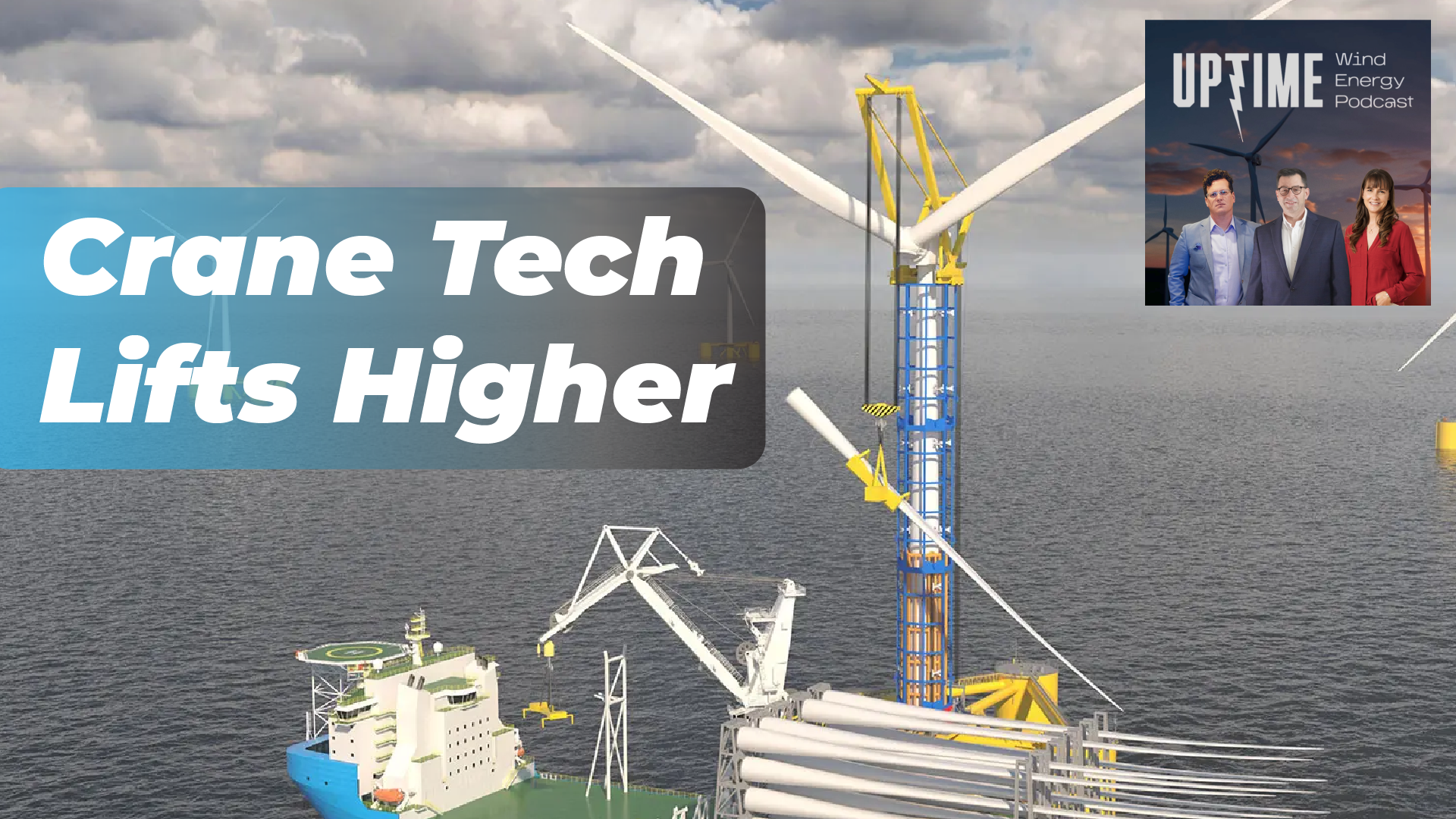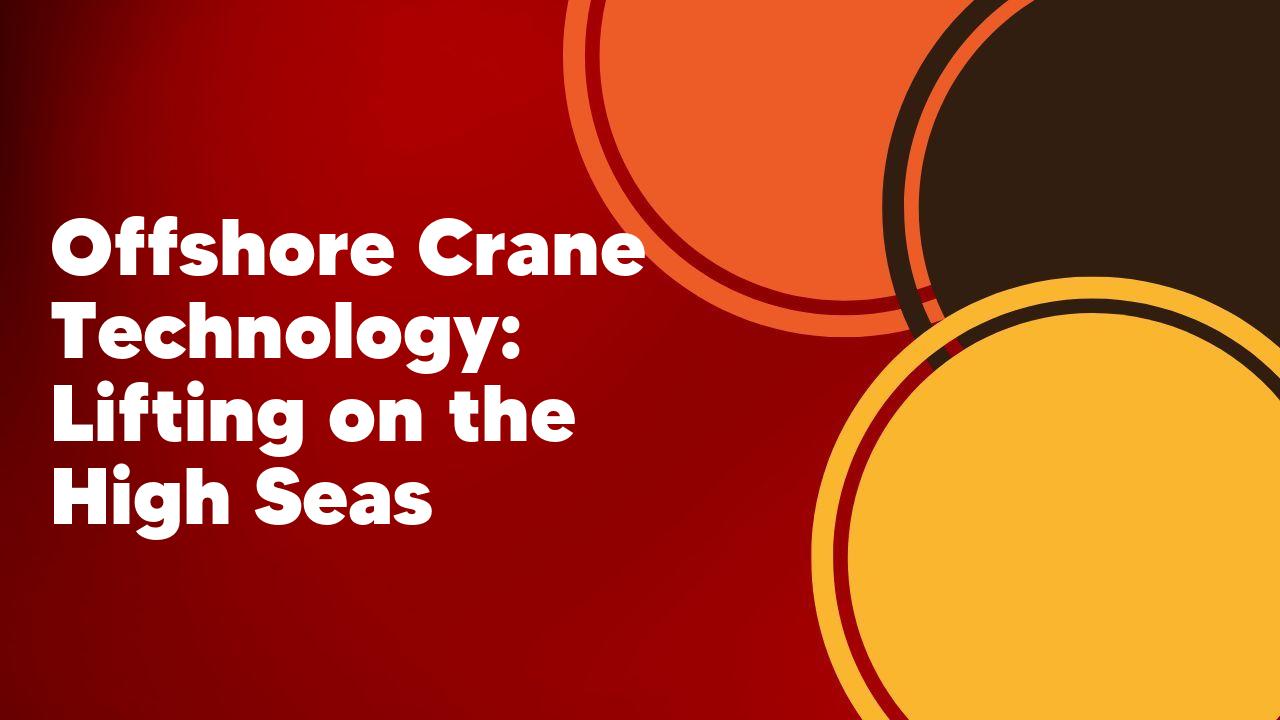Offshore crane technology has revolutionized the way heavy lifting is done on the high seas. With the increasing demand for offshore oil and gas exploration, these cranes play a crucial role in the installation and maintenance of offshore platforms and equipment. This article explores the advancements in offshore crane technology and how it has improved safety, efficiency, and productivity in the offshore industry.
The Evolution of Offshore Crane Technology: From Manual to Automated Systems
Over the years, offshore crane technology has undergone a significant evolution, transitioning from manual systems to highly advanced automated systems. This evolution has been driven by the need for increased efficiency, safety, and productivity in offshore operations. Manual systems required a high level of human intervention, which often led to delays, errors, and safety risks. However, with the introduction of automated systems, offshore crane operations have become more streamlined and precise. These systems utilize advanced sensors, computer algorithms, and remote control capabilities to perform complex lifting tasks with minimal human intervention. The automation of offshore crane technology has revolutionized the industry, allowing for faster and safer operations, ultimately leading to increased productivity and cost savings.
The Importance of Offshore Crane Safety: Ensuring the Protection of Workers and Equipment

Offshore crane safety is of utmost importance in ensuring the protection of workers and equipment in the oil and gas industry. With the hazardous nature of offshore operations, it is crucial to have strict safety measures in place to prevent accidents and injuries. Offshore cranes are used for various tasks such as lifting heavy equipment, transferring supplies, and personnel transportation. Any failure or malfunction of these cranes can have severe consequences, including loss of life, damage to equipment, and environmental disasters. Therefore, regular inspections, maintenance, and training programs are essential to ensure the safe operation of offshore cranes. Additionally, implementing safety protocols and providing personal protective equipment to workers further enhances their safety and reduces the risk of accidents.
Offshore Crane Design: Innovations for Enhanced Performance and Efficiency
In recent years, there have been significant advancements in offshore crane design, leading to enhanced performance and efficiency in the industry. These innovations have been driven by the need to improve safety, increase lifting capacity, and reduce downtime. One key development is the use of advanced materials, such as high-strength steel and composite materials, which offer improved strength-to-weight ratios and corrosion resistance. Additionally, the integration of advanced control systems and automation technologies has allowed for more precise and efficient crane operations. This includes features like active heave compensation, which reduces the impact of vessel motion on lifting operations. Overall, these advancements in offshore crane design have greatly improved the productivity and safety of offshore operations.
The Role of Offshore Crane Operators: Training and Skills Required for Safe and Effective Operations
Offshore crane operators play a crucial role in ensuring safe and effective operations in the oil and gas industry. These skilled professionals are responsible for operating and maintaining the cranes used for lifting heavy equipment and materials on offshore platforms. To perform their duties safely, offshore crane operators must undergo extensive training and possess a range of skills. This includes knowledge of crane operations, rigging techniques, and safety procedures. They must also have excellent hand-eye coordination, spatial awareness, and the ability to work well under pressure. Additionally, offshore crane operators must be able to communicate effectively with other team members and follow instructions accurately to ensure the smooth and efficient running of operations.
Offshore Crane Maintenance: Ensuring Reliability and Longevity in Harsh Marine Environments
Offshore crane maintenance is crucial for ensuring the reliability and longevity of these heavy-duty machines in harsh marine environments. These cranes are subjected to extreme weather conditions, corrosive saltwater, and constant exposure to moisture, which can lead to accelerated wear and tear. Regular maintenance and inspections are necessary to identify and address any potential issues before they become major problems. This includes lubricating moving parts, checking for corrosion, and testing safety features. Additionally, proper training and certification of crane operators is essential to prevent accidents and ensure the safe operation of these powerful machines. By prioritizing maintenance, offshore crane owners can maximize their investment and minimize downtime.
Future Trends in Offshore Crane Technology: Advancements and Challenges in the Industry
The offshore crane industry is constantly evolving, with advancements in technology driving significant changes. One of the key future trends in offshore crane technology is the development of more advanced control systems. These systems will allow for greater precision and efficiency in crane operations, reducing the risk of accidents and improving overall productivity. Additionally, there is a growing focus on automation and remote operation capabilities, which will enable cranes to be operated from a safe distance, reducing the need for personnel to be physically present on the crane. However, along with these advancements come challenges, such as the need for increased cybersecurity measures to protect against potential hacking threats. Overall, the future of offshore crane technology looks promising, with continued advancements expected to revolutionize the industry.
Conclusion
In conclusion, offshore crane technology has revolutionized the way heavy lifting is done on the high seas. These advanced cranes have increased efficiency and safety in offshore operations, allowing for the transportation and installation of large structures with ease. As the offshore industry continues to grow, the demand for innovative crane technology will only continue to rise.
What is offshore crane technology?
Offshore crane technology refers to the specialized equipment and systems used for lifting heavy loads on offshore platforms and vessels in the high seas.
What are the main components of an offshore crane?
The main components of an offshore crane include the boom, hoist rope, hook, winch, and control system. These components work together to safely lift and move heavy loads.
How are offshore cranes different from onshore cranes?
Offshore cranes are specifically designed to withstand the harsh marine environment, including high winds, waves, and corrosive saltwater. They also have additional safety features to ensure stability and prevent accidents.
What are the applications of offshore crane technology?
Offshore crane technology is used in various industries, including oil and gas exploration, offshore construction, wind energy installation, and maritime transportation. It enables the safe and efficient handling of heavy equipment and materials in these challenging environments.
What are the safety considerations for offshore crane operations?
Offshore crane operations require strict adherence to safety protocols to prevent accidents and protect personnel. Safety considerations include proper training of operators, regular maintenance of equipment, and adherence to industry regulations and standards.
How is offshore crane technology advancing?
Advancements in offshore crane technology include the development of more efficient and powerful cranes, improved control systems, and enhanced safety features. Automation and remote operation capabilities are also being integrated to increase efficiency and reduce human error.

